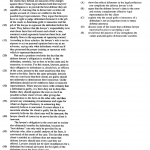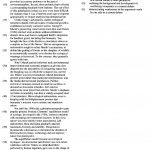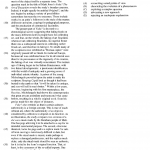primary purpose
1.

This video covers the Primary Purpose questions.
exercises
Click on the image to get a full-size view of the passage and question(s), read through it and do the question(s). Click on the ‘answer’ link for my explanation.
7. B
This is a primary purpose question and is in this case broad. Having read the whole passage and summarizing as we go along we can say that the author primarily challenges the perspective that lawyer’s only have an obligation to their client by showing that an obligation to society is important and also benefits their client.
A – This is incorrect since the term ‘ethical dilemmas’ is not very clear and likewise the author isn’t primarily showing that the lawyer’s role is made complicated, but that it instead it is important and ultimately benefits everyone.
B – This is the correct answer since arguing that a defense lawyer has a duty to the court and to society is a challenge to the legal scholars introduced in the first paragraph and saying that it complements effective legal representation for the client is the same as saying that everyone benefits.
C – This is incorrect because the author does think that the actual guilt or innocence is important to defense attorneys.
D – This is incorrect because although this does appear in the last paragraph, it’s not the main point but instead is a subsidiary point for what is required for the best defense of a client.
E – This is incorrect because the values and principles of democratic societies are used to support the perspective of the legal theorists and are not the primary purpose of the passage.
18. D
This is a primary purpose question and it’s more general since it deals with the whole passage. The author basically compares and contrasts the current polarized relationship between environmentalists and industrialists and a previous less polarized relationship and gives an explanation as to why there’s a difference.
A – This is incorrect since the author doesn’t provide any examples but rather explains why the polarization which is responsible for the crisis, is occurring.
B – This is incorrect because the passage doesn’t argue that the conflicting viewpoints (environmentalist vs industrialist) are equally valid, but that their relationship has changed over time – they have gotten more polarized.
C – This is incorrect because, once again, the passage doesn’t argue that one or the other viewpoint is more persuasive but that there is a difference in their relationship from previously.
D – This is the correct answer the background of the conflicting viewpoints is the fact that they used to be a lot less polarized and now are more polarized and the development refers to why they are in that relationship now.
E – This is incorrect because the passage doesn’t deal with the weakness of one or the other side in the debate.
21. C
This is a primary purpose question, and it’s general since it deals with the whole passage. As you’re reading through it you should be keeping track of the argument and have a summary by the time you’re done. In this case the author develops the idea of what a ‘fake’ is by looking at its various historical and cultural contexts.
A – This is incorrect since the author doesn’t reconcile anything; to reconcile means to show how different things can all be true or work together.
B – This is incorrect because although the author introduces the notion of a chronological survey, that is simply the author describing how the book in question is structured. Likewise, the chronological survey doesn’t show an evolution, it shows examples of the phenomenon from different time periods.
C – This is the correct answer. The complex question is ‘what constitutes a fake?’ and the second and third paragraphs explore answers to that question, with the second paragraph focusing on historical examples for a particular understanding of the motivations behind fakes and the third paragraph focusing on the nature of authentic vs fake works.
D – This is not the correct answer because the author isn’t advocating anything, to advocate means to support or propose something. And there’s also no novel, or new, approach introduced.
E – This is incorrect because the explanations offered for what a fake is or what motivates people to make fakes are not rejected as being inadequate.


